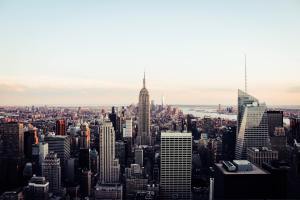
NoMad is a vibrant neighborhood showcasing the quintessential New York way of life. It is located in central Manhattan, between Seventh Avenue and Lexington Avenue from 23rd Street to 30th Street. The area is served by several subway and bus lines, making commuting easy, and is adjacent to Madison Square Park, a beautifully landscaped oasis of serenity within the fast-paced, concrete jungle that is New York.
NoMad got its name in 1999 after New York City established the Madison Square Park North Historic District. The New York Times shortened the district’s name to NoMad from North Madison Square. The area is well known for its fine architecture and rich history.
In the 19th Century, NoMad was a crossroad, a nexus between upper class New York and the less affluent Tenderloin District. The area went by many names back then and was a bustling center of New York nightlife. It hosted several fine restaurants, a world-class theater, and internationally-renowned hotels. On the west side of Broadway lay the upscale center’s underbelly, a popular circus boasting bars with shooting galleries and betting parlors. This combination of high-end living with a rough edginess was what attracted people from all backgrounds to the area. Famous personalities like Mark Twain, Oscar Wilde, PT Barnum, and Thomas Edison were often spotted along its streets, as were well-known military generals and visiting foreign dignitaries.
NoMad has grown tremendously over the years, smoothing out its rough edges to become a safe and serene environment to live, work, and nurture a family in. Its streets are lined with attractively re-conceived older buildings that maintain their historic character, as well as new high-end developments. One of these is a 24-story rental building being developed by CRP Nomad LLC that will have more than 42,000 square feet of living and retail space.
NoMad is home to many celebrities and accomplished professionals. Its residents share a mix of high energy and a casual coolness. They enjoy convenient access to banks, day care centers, drug stores, laundries, grocery stores, and places of worship. When they are not working, they have plenty of opportunities to sample the neighborhood’s offerings that include fine dining, retail, and nightlife. Nearby entertainment venues include the Baruch Performing Arts Center, Jazz Gallery, and Gramercy Theatre. Gyms include AKT in Motion, CrossFit NYC: The Black Box, Soul Cycle, and Chinese Kung Fu Wu Su Association.
Further, the NoMad Alliance, a nonprofit committed to sustaining the community’s creative and dynamic character, regularly organizes events such as festivals, concerts, parties, and sports contests that both residents and visitors can enjoy. Some of these are held at Madison Square Park.
More than just a living community, NoMad is also a business hub. It hosts a number of large companies including Tiffany & Co., Credit Suisse, New York Life, Grey Advertising, and Sony. In addition, the neighborhood has a burgeoning tech scene. Silicon Alley, an up and coming tech center that runs through NoMad, is home to some of the largest tech companies in the country including Google, LinkedIn, ZocDoc, and Yelp. Other tech companies that call Silicon Alley home are ThoughtWorks, Zero-In, and Sketchfab.



You must be logged in to post a comment.